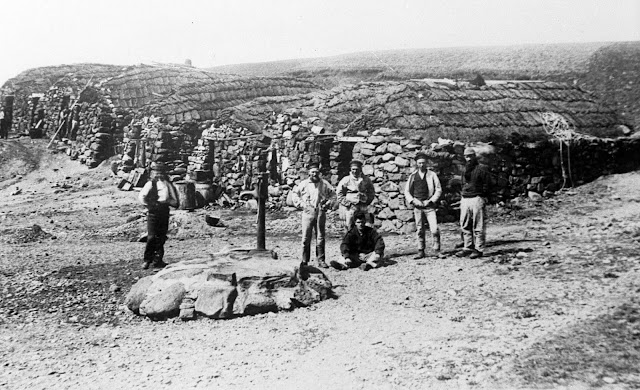Sunday
18th June - Readings
We met on Stenness Beach and a small group gathered; people very generously came and gave us their time and voices to read in the shelter of the Bød.
We made some wonderful oral recordings read from 19thC handwritten texts that we’ve been painstakingly transcribing - extracts from the Day Book (now kept at Tangwick Haa Museum) noting daily purchases from the Bød when once it was a shop, from the Fishermen Agreements Book and from records of the Ling fishing - kept in Shetland Museum & Archives.
We met on Stenness Beach and a small group gathered; people very generously came and gave us their time and voices to read in the shelter of the Bød.
We made some wonderful oral recordings read from 19thC handwritten texts that we’ve been painstakingly transcribing - extracts from the Day Book (now kept at Tangwick Haa Museum) noting daily purchases from the Bød when once it was a shop, from the Fishermen Agreements Book and from records of the Ling fishing - kept in Shetland Museum & Archives.
Thank you to John N Hunter, Nancy Hunter, Valerie Watt, Ruth Fisher, Wilma Stewart.
The names of
the fishermen who once inhabited the lodges and worked on this beach floated into
the air and out to sea, merging with the sounds of sea birds and the
sea pushing and pulling on the shore. It felt pretty special - in fact it made my spine tingle.
 |
| Haaf fishermen from 1890's Stenness, (published in the New Shetlander No 59, 1961, supplied by John H Johnson) |
 |
| Stenness fishing lodges and Haaf fishermen 1890's ( Shetland Museum Photographic collection) |
Slowly the beach begins to emerge as a place of work and the noise of the men working and living here. The more we walk around the shores the more the remains of the lodges become visible. Looking out to sea we imagine the sixareens pulling away from the shore, the land gradually disappearing as they row out to the far haaf.
Today it's cold and there's a wind blowing the sea into the bay. Jo is up on the cliff on one side filming the incoming tide.
I go back to my kite flying attempts.... there's enough wind but I'm not sure that the camera is set in the right place...
It does give some sense of the landscape. I even catch glimpses of the ruined lodges and can see them more clearly as part of the landscape, but it's probably a bit too random for our project. Yes it would probably be easier to use a drone but I'm not keen on such high tech approaches and I like the sense of drawing in the sky over the landscape.
We leave the beach at 11pm - simmer dim is approaching in a few days time, but we need our sleep. Another busy day approaches



















































